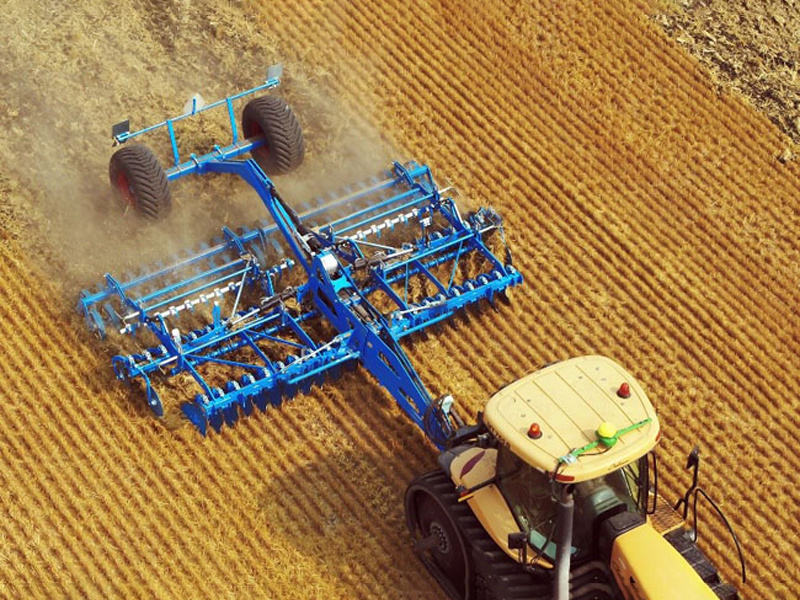Soil Improvement Measures Technical Manual
2025-06-20
Soil and land are core elements of agricultural production, and soil condition determines the value of agricultural production. Poor and compacted soil is also a major cause of various agricultural diseases, and soil improvement is an important foundation for efficient agricultural production.

Soil and land are core elements of agricultural production, and soil condition determines the value of agricultural production. Poor and compacted soil is also a major cause of various agricultural diseases, and soil improvement is an important foundation for efficient agricultural production. Good soil has a very strong water retention, fertilizer retention, and moisture retention capacity, enabling the continuous production of more high-quality agricultural products. It is also suitable for the cultivation of most cash crops and has high agricultural investment value.
The soil environment is a complex ecosystem and the main site for the activities of natural microorganisms, energy storage, and transformation. Soil types are mainly divided into sandy soil, clay soil, and loam. Sandy soil has a high sand content, coarse particles, fast water seepage speed, poor water retention, and good aeration. Clay soil has a low sand content, fine particles, slow water seepage speed, good water retention, and poor aeration. Loam is average in all aspects. The organic matter content in the soil determines the soil structure and fertility. The thicker the cultivated layer of the land, the more fertile the soil; the higher the dry matter content in the soil, the more loose and permeable the soil. It is difficult to quickly increase the organic matter and dry matter content in the soil; it requires a series of comprehensive measures over a long period to gradually improve it.
The main factor affecting soil changes is production farming methods. In actual production, the overall stability of the field ridges should be strengthened, ditches should be regularly repaired, and drainage should be carried out in the rainy season to prevent soil erosion. Deeply plow the soil in autumn and winter, use sunlight to sterilize, exchange the upper and lower soil layers every other year, and apply a large amount of biological organic fertilizer to activate and increase soil nutrients. Use chemical fertilizers scientifically to prevent soil compaction and degradation. Use fertilizer according to soil characteristics. For land with poor water and fertilizer retention, use the method of applying fertilizer in small amounts and multiple times. For calcareous and alkaline soil, use acidic fertilizers for improvement, such as ammonium sulfate and ammonium chloride. Acidic soil can use alkaline nitrate fertilizers. Regularly use an appropriate amount of biological enzymes or microbial agents every year, applying them to the soil with irrigation, to supplement the nutrition of beneficial microorganisms and effectively reduce and inhibit the occurrence of soilborne diseases. Prohibit the use of herbicides and inferior pesticides to reduce pollution and maintain soil biodiversity. Scientific crop rotation production can also improve the soil and solve the problems of soil continuous cropping, low yield, and poor quality. Soil improvement is a long-term fundamental measure and the basis for the benign cycle of agriculture. Welcome to leave a message and follow.
Previous:
Related Blog
Autumn is a harvest season, but also a sowing season. While many farmers may have nearly completed their autumn plowing, many others may still be in the process. Whether you have finished or not, today we will discuss rotary tillage and plowing during the plowing process. How to choose the right tillage method? Hopefully, after reading this, you will have less confusion and more understanding.
From plowshare to plow blade: A comprehensive interpretation of the magical power of moldboard plows
The moldboard plow, a marvelous tool in the agricultural field, has played an indispensable role in farmland since its inception. From ancient plowshares to modern, highly efficient plow blades, the evolution of the moldboard plow has witnessed the advancement of agricultural technology. It has not only improved farming efficiency but also laid a solid foundation for stable and high yields of crops. Next, let's step into the world of moldboard plows and fully understand their amazing power.
Contact us
-
Phone:+86-0371-68111999
-
Phone:+86-13526676666
Email:zzkefeng@163.comAddress: Shangjie District, Zhengzhou City, Henan Province


